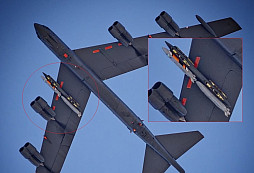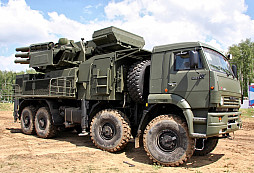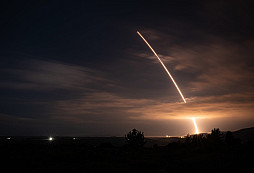System DPET: All-seeing eye of the Army of the Czech Republic
The soldiers of the 532nd Electronic Warfare Battalion have been working for a year with the new passive tracking system DPET from the Czech manufacturer ERA, which is the successor of the previously used systems Věra S/M. With the advent of DPET sets, our army has significantly increased its capabilities in the field of detection and tracking of ground, air and surface targets. Our editorial team had the opportunity to see DPET in action at the recent Drone Shield 2024 exercise, so we became more interested in the system and our soldiers' experience with it.

Soldiers of the 532nd Electronic Warfare Battalion received the first of two sets of the new Deployable Passive ESM Tracker (DPET) last December. The term passive reflects the fact that the system does not emit any signals during its operation, making it invisible to electromagnetic warfare assets on the battlefield, unlike conventional radar. DPET therefore "observes without being observed" and detects its targets by receiving signals emitted by the adversary's equipment.
The DPET system consists of four Vera-NG antenna units, individually housed in standardized ISO-1C containers, which are transported in ballistically protected Tatra T-815 8x8 vehicles with a hook loader. The fifth container contains the Main Processing Shelter, which is the operators' workstation. Due to the fact that the entire DPET set is transported directly on the vehicles and is not towed like the previous tracking systems, its overall mobility and ground clearance has increased. In the so-called lightweight version, the antennas can be dismantled from the masts and deployed using tripods. Other parts of the system can also be removed from the container and transported in robust transport boxes. The actual power supply is provided by a power pack. The kit also includes two Toyota Hilux off-road vehicles with trailer, inflatable tents and other equipment.

The DPET system can simultaneously intercept and track up to 200 targets in the form of aircraft, drones, ships or vehicles, at a range of up to 400 kilometres (depending on geographical conditions and weather). Of significance is their ability to identify the specific type of machine in addition to the category of target. In the context of electromagnetic warfare, the system is then able to analyse the sources of electromagnetic radiation from airborne, ground or surface targets to help detect potential threats to its own forces in a timely manner.
Since the beginning of the introduction of the DPET system into the Czech Army, emphasis has been placed on increasing the connectivity, integration and compatibility of these new systems with existing Czech and allied command and control systems in order to provide the acquired data to all major national and NATO coalition systems faster, more efficiently and more comprehensively than ever before. A major advantage of the DPET system is its ability to communicate with the Alliance's Collaborative ESM Operations (CESMO) electronic warfare network. DPET can also provide data via Link 16 datalinks to share information with individual aircraft operating in the air and is also able to communicate with command and control systems within the ground-based air defence system.
Our Army plans to use both sets of DPETs for the next 10–15 years and plans to upgrade the systems over time. Currently, the Czech Army has one of the most advanced passive surveillance systems in the world, which not only fully supports the defence of the state, but also deters potential adversaries.
We asked members of the 532nd Electronic Warfare Battalion directly about their practical experience with the new DPET systems.
You've had a DPET passive tracking system in the 532nd Battalion for almost a year now. How do you currently evaluate it?
We have had the DPET system in the battalion since December last year. During this time, our training has focused primarily on the basic operation, construction and use of the system as a whole. Operators are gradually becoming proficient in the use of all application software functions and gaining experience in interfacing DPET with other systems such as command and control or ground-based air defence systems. We can say that the generational difference from older technologies is clear - today we have a very sophisticated system at the highest technological level.
What is the staffing situation of the system operators? Do you have full staff?
Finding suitable candidates for these specialised positions is a challenge, not only in the military but also in the civilian sector. We still have vacancies for operators and are looking for candidates with a high school or university degree in electrical or information technology. However, our training system can also prepare candidates from other professions. For those interested in modern technology and service in the military, the DPET system offers a unique opportunity to work in a field where the Czech Republic is one of the world leaders.
What new capabilities does the DPET system bring over previous tools such as VERA S/M?
Compared to previous versions of the VERA S/M system, the Czech Army required a fully operationally deployable passive electromagnetic warfare system. The main difference lies in the enhanced interconnection capabilities, technical compatibility and deployability of the system in different types of operations. The new features include an improved technological core of the VĚRA NG system, mast automation, upgraded chassis platforms, application equipment, improved camouflage for combat deployment, and a new link system.

What exercises has DPET been tested on so far and how has it performed?
In addition to normal crew training, we have had the opportunity to participate in several home exercises with DPET. These have mainly focused on integrating DPET into command and control systems and comparing information from DPET and the MADR active tracking system. This year we also tested the detection and location of unmanned aerial vehicles as part of the Drone Shield 2024 exercise.
What exactly can DPET monitor? What types of signals does it capture?
DPET is designed to track airborne, land and maritime targets. It can therefore be used across the full spectrum of military operations. It monitors the frequency spectrum from 87.5 MHz to 18 GHz. It is capable of receiving pulsed signals used by radars and data links, continuous signals typical of drones, electromagnetic jammers, and SIF/IFF and ADS-B airborne identification systems.
What advantages does DPET have over other passive systems in allied militaries?
The passive electromagnetic warfare systems of the Czech Armed Forces are not intended only for the support of air forces, as is the case with allied armies. Our army uses them for direct and early detection of targets and threats in the electromagnetic spectrum for task forces of the ground and air forces of the Czech Armed Forces, NATO or the EU and for the defence of its own territory. This corresponds to the system design in terms of transport, modularity, ballistic protection and compatibility with alliance systems. DPET is unique in the Alliance due to its operational deployment capabilities.
How fast is the rollout of the DPET system, at least in order of magnitude?
This depends on the specific situation and conditions of the operation. Usually it can take from a few minutes to several hours, or even days in extreme cases - it all depends on the terrain, security conditions and the type of operation. The system requires the deployment of a central receiving station and three side stations spaced kilometres apart, so transporting antennas to suitable locations can be the most time-consuming. The actual deployment of the automated masts and commissioning of the system then has a marginal impact on the deployment of the system.
How far apart must the antennas of a DPET system be placed?
The minimum distance between the central and side receiving stations is around 5 kilometres, with a maximum distance of up to 30 kilometres. Thanks to the new retransmission function, we can also place some stations in more remote locations.
How much territory can one set of DPETs cover?
Generally, the manufacturer states a range of up to 400 kilometres, but this varies according to the conditions of operation and the characteristics of the specific target to be detected.
Is the DPET system upgradable and what is its lifetime?
DPET has a 10-year life cycle, after which there should be a "system evaluation," which means upgrading or modifying the hardware components of information and communication systems. During this period, the application and software components are also gradually upgraded.
Does linking multiple systems such as DPET and other systems bring any new capabilities?
Yes, for example, during an exercise with colleagues from the 25th Anti-Aircraft Regiment, we sent data from both DPET and their active radars to the Joint Operational Picture for Air Defence. This integration allows for a more comprehensive view of the air situation and faster and more accurate detection of threats in the area of operations.
How does DPET react to interference from an adversary's electromagnetic spectrum? Is it able to acquire information in this situation?
For jammers to work, they must have something to jam. However, DPET is a passive sensor, so it does not send out any signal and is therefore not affected by interference. On the contrary, these adversary assets send detectable signals, which helps us locate their position quickly.
Does the DPET system use artificial intelligence?
Artificial intelligence is a very broad term, and it is beyond the scope of this interview to specify it any further. For us we can say that most of today's modern technologies and especially software tools use elements of artificial intelligence, or more precisely machine learning, and the DPET system is no exception.
What tasks will DPET have in connection with the introduction of the F-35 aircraft?
This is a question of future integration. In general, DPET is ready to transfer its outputs in specified formats to national and alliance command and control systems for both ground and air forces.























